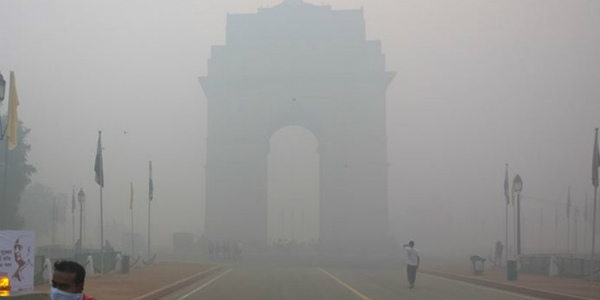
Delhi’s air quality has been deteriorating day by day. Delhiites are constantly breathing toxic air ever since the beginning of October. Major contributors are vehicular emissions, stubble and coal burning and constructional waste.
As the air quality across the national capital region continues to dip, the medical experts state that one should step outdoor only if one would want to take some spoonful of toxin air as at present, weather conditions are not at all conducive to stay outside.
The smoggy weather in Delhi-NCR could be seen prevailing over the region even after Supreme Court banned the sale of firecrackers ahead of Diwali. Wednesday was no different and saw a smog layer enveloping the city and its nearby regions.
[yuzo_related]
However, Delhi’s air quality is now all set to witness slight improvement. As per Skymet Weather, during the last 24 hours, the wind pattern changed from northwesterly to southwesterly. Along with the wind reversal, the speed of winds has also increased.
Initially, the winds that were prevailing over the region were calm to very light, which were unable to lift the pollutants in the atmosphere. This had led to the formation of smog layer over the national capital region.
However, as the wind speed has now increased and is blowing at a speed of 10-12 kmph, the layer of smog has now thinned to some extent and reducing the pollution levels as well.
Check out the current status of Air Pollution in Delhi
Further, these southeasterly winds are expected to continue to blow for the next few days and thus, paving way for bright sunshine during the afternoon hours. This in turn will lead to reduce in pollution levels during the daytime.
However, by evening, the wind speed will slow down due to which haze and smog layer is expected to rise up again during the night and early morning hours. The similar situation can be anticipated to prevail for the next 3-4 days over Delhi-NCR.
Thereafter, air quality will start worsening once again as the wind speed will again become light to very light, pushing the pollution levels to new highs.
Image Credit: wikipedia.org
Any information taken from here should be credited to skymetweather.com


